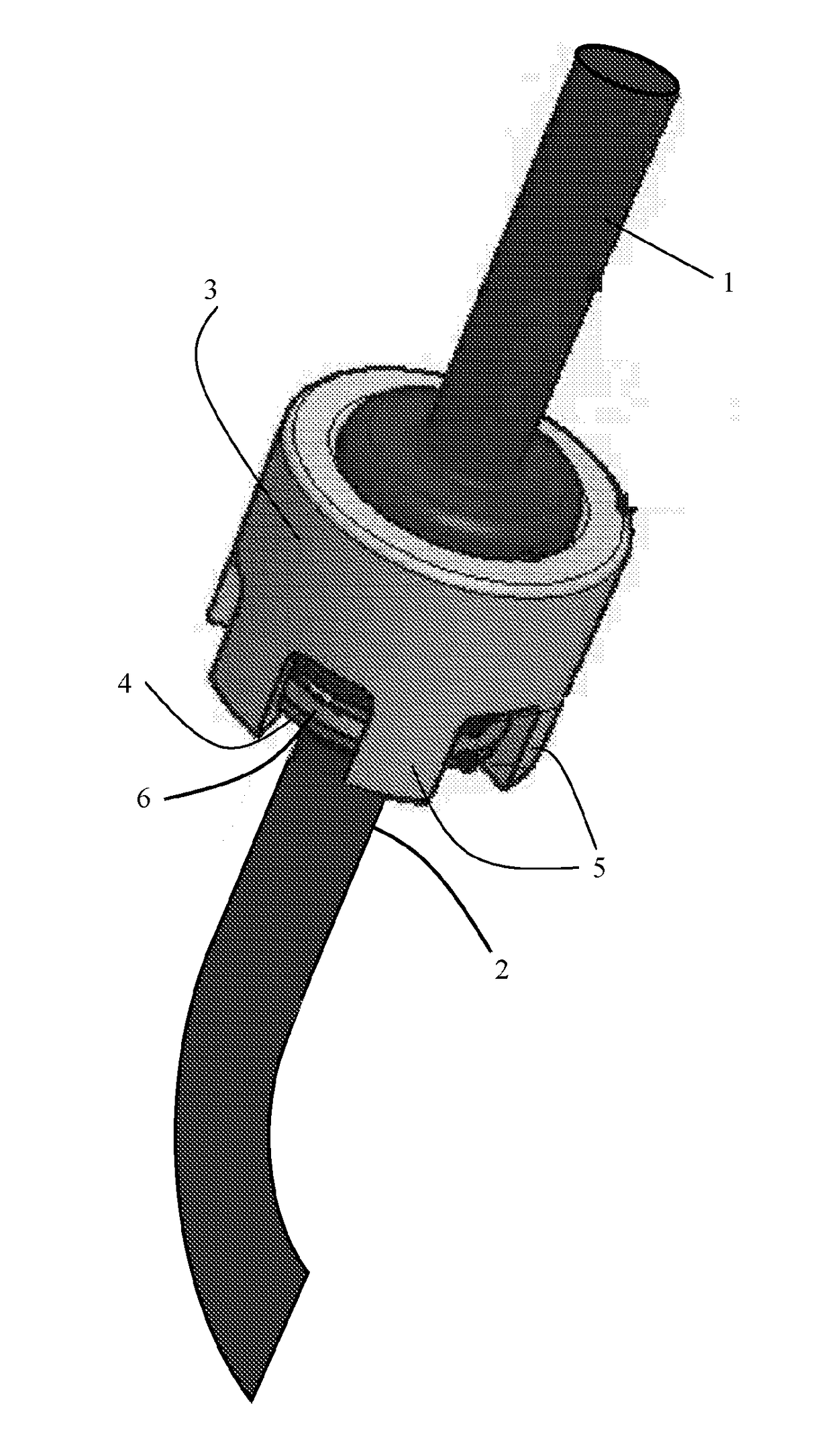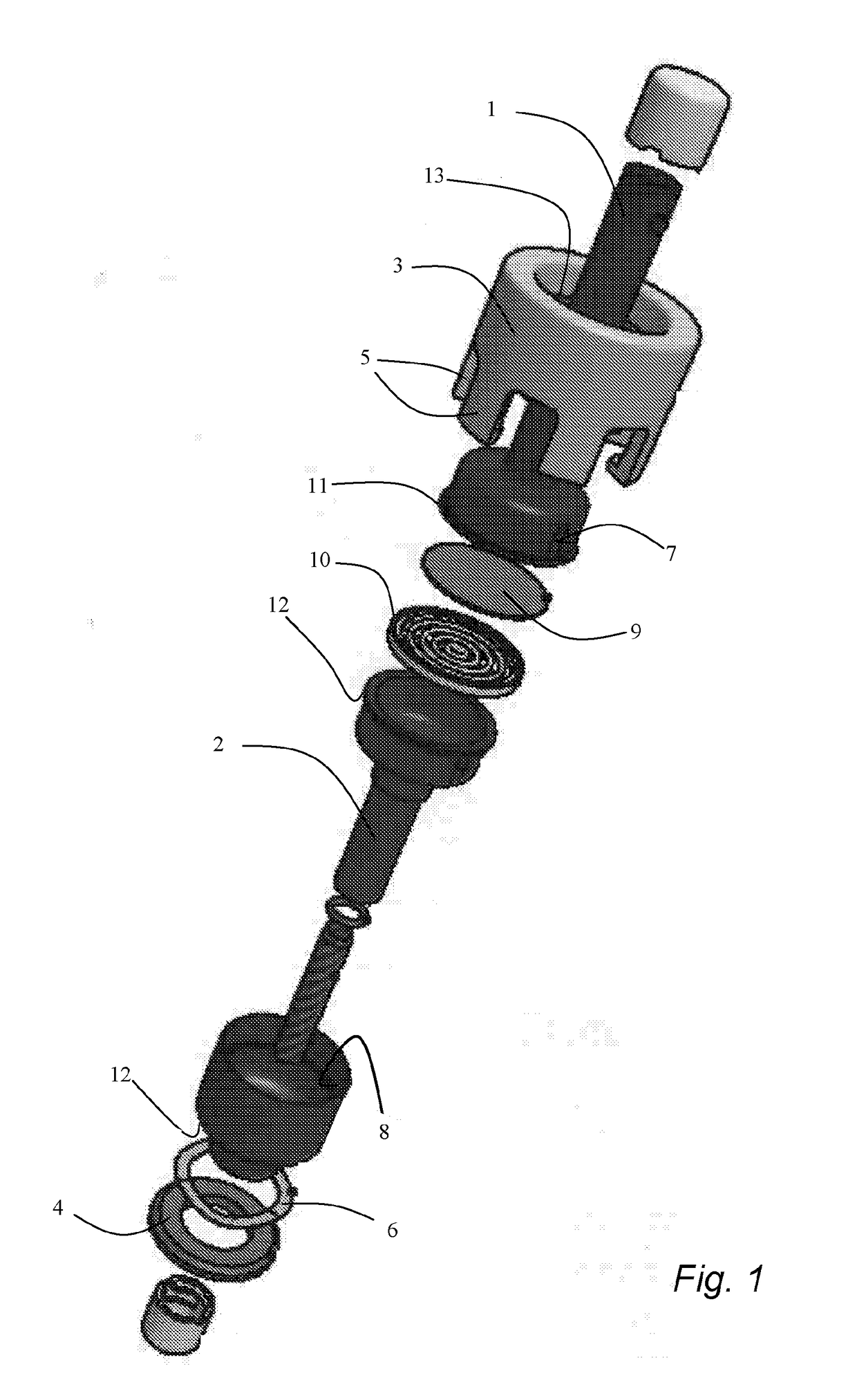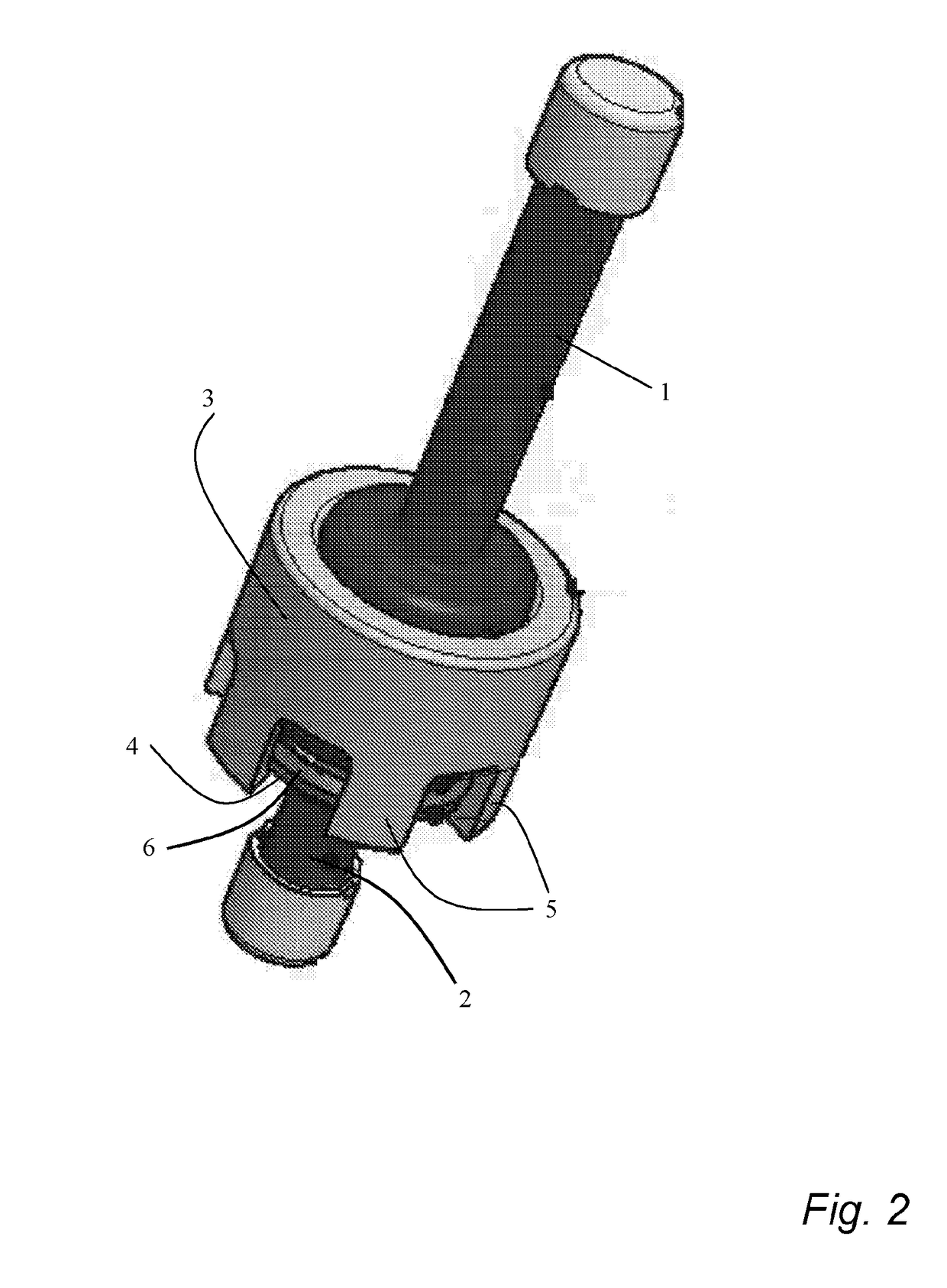Sealing connection assembly for a sampling device
a sampling device and sealing connection technology, applied in the direction of couplings, laboratory glassware, instruments, etc., can solve the problems of reducing the risk of manipulation and reuse of sampling devices, affecting the sealing effect, so as to reduce the risk of manipulation and reuse of sampling devices. , the effect of reducing the risk of manipulation and reus
- Summary
- Abstract
- Description
- Claims
- Application Information
AI Technical Summary
Benefits of technology
Problems solved by technology
Method used
Image
Examples
Embodiment Construction
[0033]The expression “fluid flow direction” used throughout the application text is intended to mean the axial direction in relation to the cross-section of the sealing connection assembly.
[0034]The expression “fluid flow” used throughout the application text is intended to mean a flow of a gas or a liquid, which also may contain components in solid form, e.g. fluidized particles and aerosols. One example of a fluid is an air flow containing small particles having the substances to analyze bound to their surfaces. Another example of a fluid flow is a water flow containing the substances to analyze, e.g. a drinking water flow, and flows in connection with purification plants.
[0035]The present invention will now be disclosed more in detail with reference to FIG. 1, which shows a sealing connection assembly used for a sampling device. The first tubular part 1, the second tubular part 2, the filter device 9, and the filter holder 10 are pressed together in a fluid tight manner by the fi...
PUM
| Property | Measurement | Unit |
|---|---|---|
| force | aaaaa | aaaaa |
| adsorption | aaaaa | aaaaa |
| distances | aaaaa | aaaaa |
Abstract
Description
Claims
Application Information
 Login to View More
Login to View More - R&D
- Intellectual Property
- Life Sciences
- Materials
- Tech Scout
- Unparalleled Data Quality
- Higher Quality Content
- 60% Fewer Hallucinations
Browse by: Latest US Patents, China's latest patents, Technical Efficacy Thesaurus, Application Domain, Technology Topic, Popular Technical Reports.
© 2025 PatSnap. All rights reserved.Legal|Privacy policy|Modern Slavery Act Transparency Statement|Sitemap|About US| Contact US: help@patsnap.com



